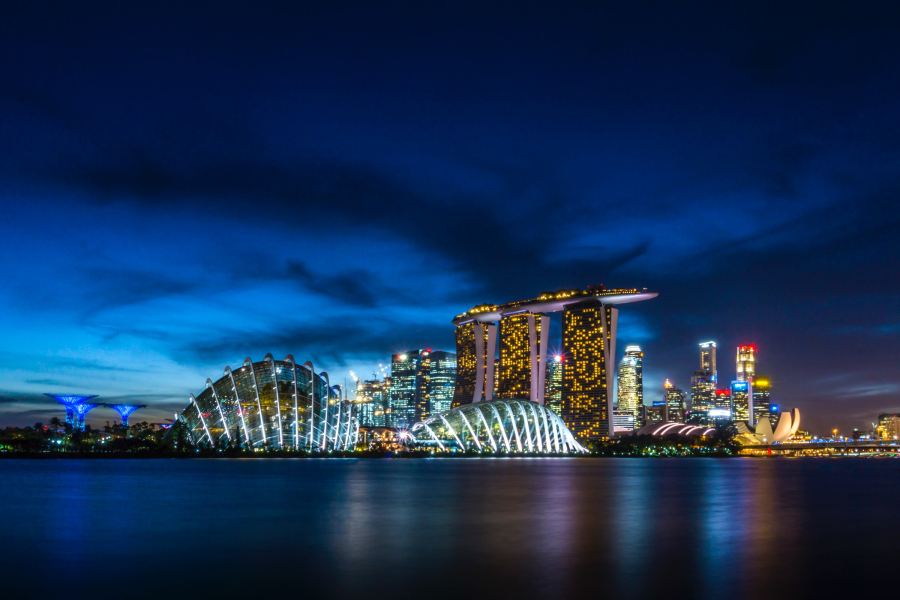Climate change is unavoidable and future generations will have to deal with our sins. It happened because we ignore the perils of continued deforestation and putting out so much greenhouse gases in the name of economic growth and so called “human development”.
For Singapore, climate change will have a big impact because we are such a small island with heavy urbanisation. The average sea level around Singapore stands at 14 cm above the pre-1970s level and further rises will put us at further risk of extreme flooding. The island afterall has 30% of its land less than 5 metres above the mean sea level. The island is also very humid and hot. On average, Singapore’s annual temperature has risen 0.25 degree Celsius over the past decade and it is going to get hotter. Further increase in temperature is going to cause the population to suffer from serious heat stress.
With that in mind, Singapore government announced the Singapore Green Plan 2030 in an attempt to mitigate the impact of climate change.
One aspect of the plan was to create a City in Nature. To achieve that, the National Parks Board (NParks) is launching a movement to plant a million trees across Singapore in the next 10 years.
As part of that movement, some 170,000 trees will be planted within industrial estates around the country with the help of the community. Tree planting will be done using tiered planting system to mimic the structure of plants in a forest. You can imagine it as a mix of trees, shrubs and other type of plants. These are also known as Nature Ways and will serve to connect the different green spaces. Modelling studies done by NParks showed that this multi-tiered planting structure could reduce surface temperature by up to 6 degree Celsius along our roads and state lands compared to planting trees in rows. This is especially useful in industrial areas as they are amongst the hottest regions in Singapore. It would make industrial areas more attractive and conducive to work in.
34,000 trees will also be planted on Jurong Island by 2022. Since 2019, nearly 13,000 trees have been planted on the island. The goal was to make the island more attractive to work in and reduce the overall temperature.
Other than tree planting, green energy is another part of the plan. Singapore will quadruple solar energy deployment by 2025. To achieve that, there will be multiple approaches which include having rooftops of HDB blocks covered by solar panels, deployment of a large scale floating solar panel systems at Tengeh Reservoir and a sea-based offshore floating solar test-bed north of Woodlands Waterfront Park. Furthermore, the country will attempt to tap on green energy sources from ASEAN region while also increasing the efficiency of each new generation of gas-fired power plants to reduce emissions.
HDB towns will also use 15% less energy through the deployment of smart LED lights. Beyond that, 80% of all buildings in Singapore will also be green over the next ten years.
Ministry of Education will also work to strengthen the curriculum and school programmes on sustainability. In addition, they will work to achieve a two-third reduction in net carbon emissions from MOE schools by 2030 and aim for 20% of schools to be carbon neutral by 2030.
To reduce the country’s reliance on cars to get around, 8 in 10 households will be within a 10-minute walk of a train station by 2030. The rail network will grow from around 230 km to 360 km by early 2030s. However, one does wonder what is the environmental cost of expanding the rail network as trees will be felled and land cleared. Even when the trees are replanted back, they will take a while to mature and sequestrate carbon from the envrionment.
For slightly longer trips but those that do not warrant taking the rail, citizens are encouraged to cycle. To encourage that, the cycling network will also be expanded to 1,320 km by 2030 while roads will be repurpose and implement pedestrianisation where possible.
Furthermore, vehicles that run on internal combustion engine will be phased out by 2040. Cars to be registered from 2030 will have to be cleaner-energy model. To support this shift, EV charging points will be increased to 60,000 by 2030 from the current 28,000. Petrol duty rates are also increased with immediate effect in 2021 as part of the goal to shift the society direction towards car-lite behaviour.
Singapore aims to demonstrate that going green is not at the expense of the economy. A key target from the Singapore Green Plan 2030 is to help enterprises embrace sustainability and develop capabilities in this area.
Another target is to create business and job opportunities in sectors such as green finance, sustainability consultancy, verification, credits trading and risk management. Part of that target include building up the financial sector’s resilience to environmental risks. This will support the country’s third target to be a leading centre for Green Finance in Asia and globally. The last target is to promote homegrown innovation under the Research, Innovation and Enterprise Plan 2025, and attract companies to anchor their sustainability R&D activities in Singapore.
Given all the above, it is my opinion that it is in Singapore’s best interest to achieve all the goals and targets earlier than 2030. The COVID-19 pandemic is the best time for us to pivot ourselves towards new growth areas and reshape ourselves to be the model for others to follow.





